Daniel Salzler No. 1243 EnviroInsight.org Five Items February 29, 2024
—————Feel Free To Pass This Along To Others——————
If your watershed is doing something you would like others to know about, or you know
of something others can benefit from, let me know and I will place it in this Information .
If you want to be removed from the distribution list, please let me know.
Please note that all meetings listed are open.
Enhance your viewing by downloading the pdf file to view photos, etc.
The attached is all about improving life in the watershed through knowledge.
If you want to be removed from the distribution list,
please let me know. Please note that all meetings listed are open.
Check our website at EnviroInsight.org
- SRP Water Conservation Expo. We’re giving you an advance opportunity to register for the 2024 SRP Water Conservation Expo™. And with this year’s lineup of activities, you won’t want to miss out!
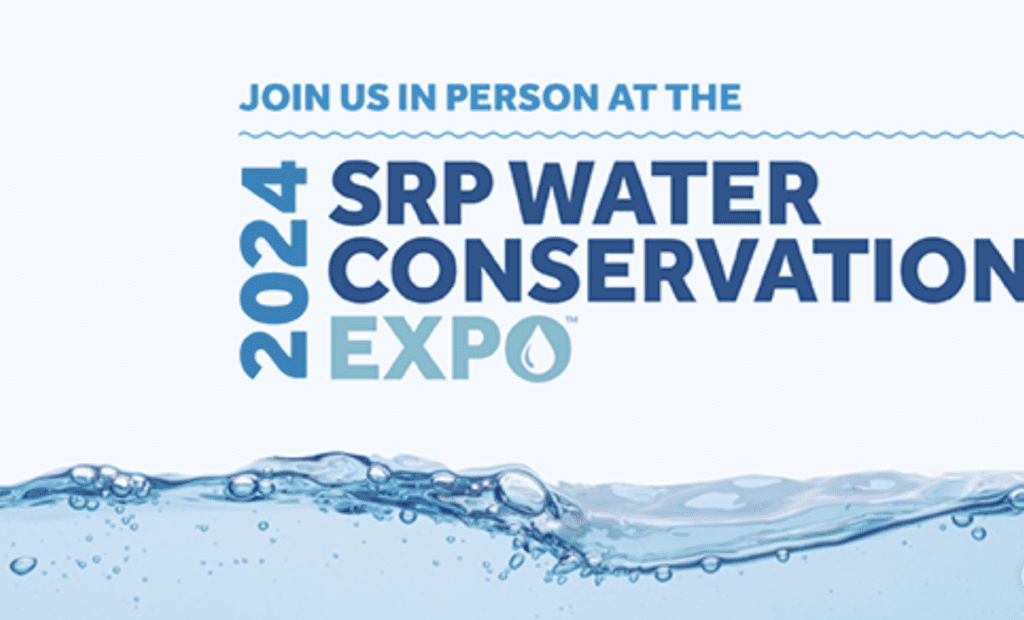
Saturday, March 2 8 a.m.– noon
PERA Training and Conference Center

1 E. Continental Drive, Tempe, AZ 85281
Come for water conservation tips, stay for the local market.
- Save hundreds on a smart irrigation controller.
- Enjoy an on-site market featuring local vendors and a plant sale
by Desert Botanical Garden.
- Discover water conservation products and rebate programs.
- Attend controller and water-related classes taught by experts.
- Learn how SRP and other water professionals manager water for the Valley.
Hope to see you there!
To register, go on line, copy and paste into your browser, the following:
2. Facing Future Of Shortages, Colorado River Users Dream Of Making More Water.
Annual Colorado River flows have decreased an average of four million acre-feet since the 21st century, while the number of thirsty people and crops continues to grow. What if the region could create new water?
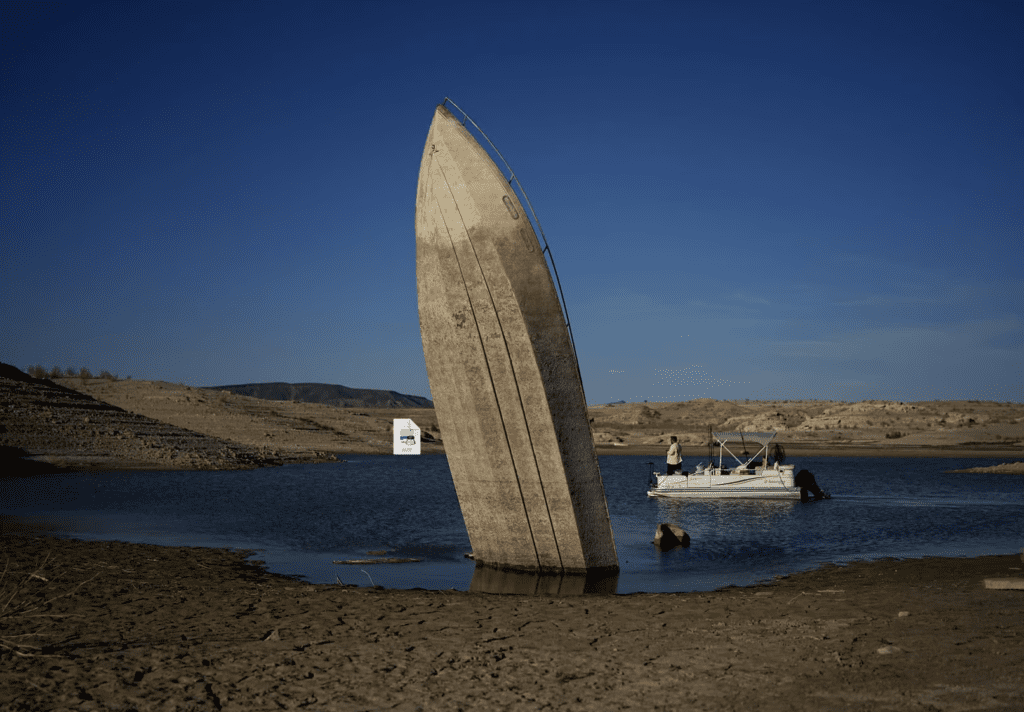
How does one generate more water in a desert? For Pilar Harris, senior director for corporate social responsibility and government relations at Formula 1, the question arose while she planned for the Las Vegas Grand Prix’s first drag race around the city’s famed Strip.
A Formula 1 race typically requires tens of thousands of gallons of water to prepare the track — but “what if we could have a net zero water impact?” recalled Harris, who relocated to Vegas from New York to help organize the event last October. Facing an already tight timeline and many sleepless nights ahead, Harris knew if there was any way to offset the race’s water use, she had to find it fast.
The issue of water conservation is particularly consequential in Las Vegas, one of many communities that depends on water from the increasingly strained Colorado River. Today, the 1,450-mile-long river hydrates 40 million people living in the southwest U.S. and Mexico, including 30 Native American tribes and thousands of farmers who together cultivate 5.7 million acres of crops.
As more people than ever depend on the Colorado River, less and less flows downstream each year. Scientists have recorded a 20% decrease in river water over the last 100 years and anticipate meeting just 80% of the average this year. Looking to the middle of the century, scientists warn the river may continue shrinking by as much as 30% by 2050.
Cities like Las Vegas are increasingly having to ask how they’re going to deliver enough water to fulfill everyone’s needs. The obvious answer is to use less. That looks like communities cutting out decorative grass, installing more efficient toilets and limiting swimming pool sizes.
As reservoir levels drop, those conversations become harder. Just two years ago, reservoirs in Lakes Mead and Powell threatened to fall low enough to cut off hydroelectric power generated by the dams. Fallow fields and residential water restrictions soon followed.
Further complicating matters is the wide variety of stakeholders who have all laid claim to Colorado River water. On paper, the water should be divided evenly between the upper basin states (Colorado, Wyoming, Utah, New Mexico) and those in the lower basin (California, Nevada, Arizona). The lower basin has historically used more than its allotted share, while the upper basin hopes to increase its water use in the coming years to support a growing population.
Both basins are making sacrifices, beginning with regulating outdoor water use and encouraging more water efficient homes. In dry years, some upper basin farmers see their taps shut off, while lower basin users spent the last decade cutting an astounding 2 million acre-feet from their annual water budget. Every drop counts, and adapting to future scarcities will require still more reductions.
Faced with this parched reality, some have started dreaming of a future where the West generates water.
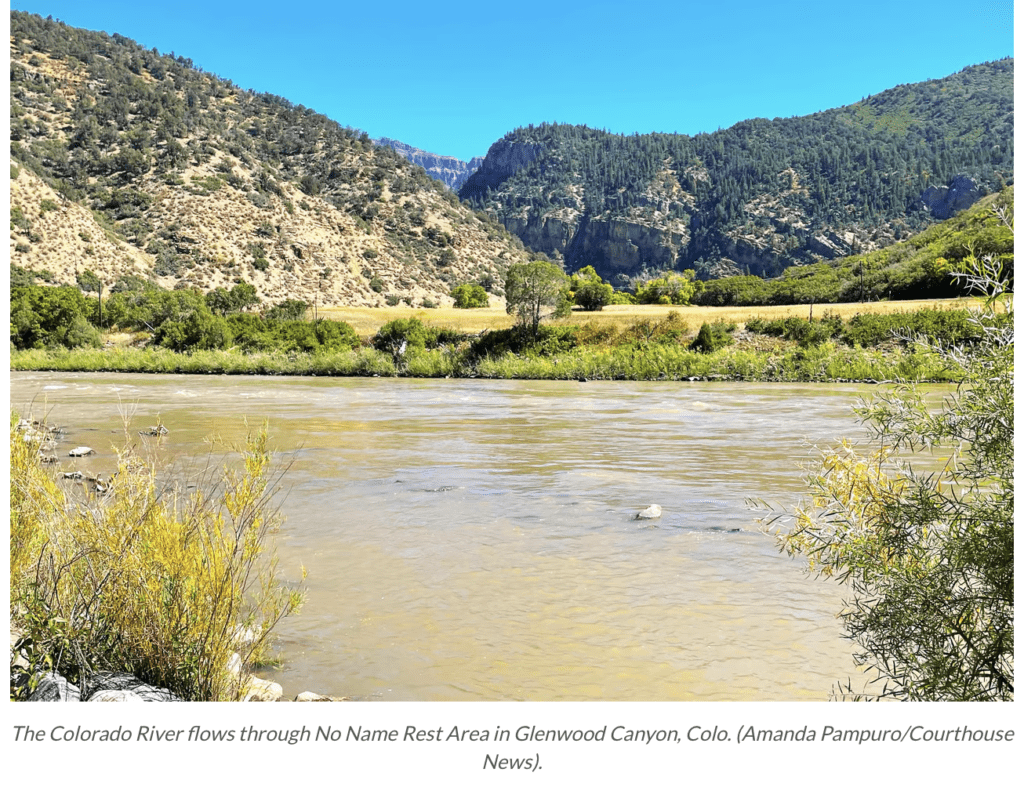
“We have to think about how we start creating new water,” Adel Hagekhalil, chief executive for the Metropolitan Water District of Southern California, told Courthouse News. Hagekhalil manages water access for 19 million individuals in and around San Diego and Los Angeles.
He made that pitch to Colorado River Water Users Association members at the group’s annual meeting in December. While other stakeholders compared notes on water efficiency and pledged cuts, Hagekhalil foresees a limit to what people are willing to give up.
“We have farmers that need more water. We have tribes that need more water, and we can’t leave anyone behind,” Hagekhalil told others at the meeting to mixed responses. “We keep fighting over cuts, but we have to think about how we adapt. We cannot be victims to hydrology.”
Southern California water managers like Hagekhalil have long salivated over an endless but unreachable seawater supply. As drought conditions worsen, many are considering the benefits of desalinated salt water.
They look to the Carlsbad Desalination Plant as a model. Since 2016, the plant has produced more than 100 billion gallons of drinking water, giving San Diego County 10% of its needed 480,000-acre-foot water supply.
Desalinated seawater is drought-resistant, but has its downsides, including the price tag. The water currently costs about $3,400 an acre foot, roughly double the going rate of Colorado River water obtained through the Metropolitan District.
Even if all costs were equal, desalination is not a silver bullet to suppliers’ water woes, Jeremy Crutchfield, a water resource manager for San Diego County Water Authority, said.
Crutchfield, who joined the agency 17 years ago as an engineer, says the future remains in cutting demand and diversifying water sources.
Crutchfield sees the biggest innovations coming through policy — particularly in cooperative efforts to view water as a regional problem rather than something any single community can fix on its own. “There’s a lot of opportunities out there to create water,” he said, “but I think the biggest opportunity for us right now is broadening the conversation going into water supply exchanges.”
Landlocked states like Nevada might lack the ability to desalinate their own sea water — but through cooperative efforts, they can still benefit from other projects. To that end, the Southern Nevada Water Authority, the Central Arizona Project and the Arizona Department of Water
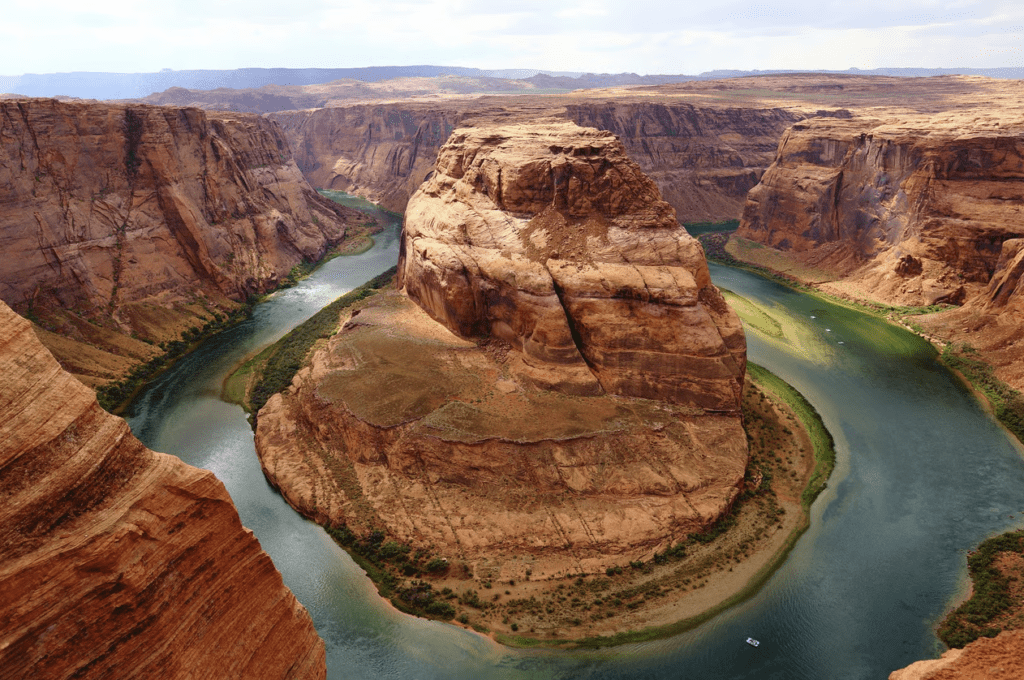
Resources each invested $6 million into the Metropolitan Water District of Southern California’s $6 billion water recycling program, dubbed Pure Water Southern California.
By investing in programs that reduce California’s reliance on the Colorado River, Nevada and Arizona help maintain Lake Mead, a vital water reservoir. Reducing the strain on Lake Mead in turn reduces the likelihood of cuts these states more frequently face as holders of junior water rights. That hypothesis will be tested in 2026, when Colorado River stakeholders are set to sign the next phase of their operating agreement.
Pure Water Southern California is currently undergoing environmental review, with plans to break ground next year. By 2032, the program will purify and recycle 150 million gallons of water daily — enough to meet the needs of 1.5 million people.
The project also represents a shift for the southern California water district, which traditionally imported water from the Colorado River and the Sierra Nevadas while funding conservation programs at member agencies like in San Diego County. “One of the reasons we’re doing it is the scale of the project,” Rebecca Kimitch, the district’s press office manager, explained in a phone interview. “This will be one of the largest water recycling projects in the world, and it takes an agency the size of Metropolitan to be able to develop it.”
Like other water managers who spoke with Courthouse News, Kimitch said people should not overlook the power of cutting waste.
“A lot of innovations and technologies can improve the water efficiency in our homes and improve water efficiency in outdoor irrigation in homes and in businesses and in agriculture,” she said. “Metropolitan is making big investments to reduce our reliance on the Colorado River by reducing our use of water outdoors.”
Back in the Silver State, the Southern Nevada Water Authority has already made most of the easy cuts. Along with limiting swimming pool sizes and decorative landscaping, the agency last year banned the installation of new evaporative coolers, which sucked up a whopping 10% of Southern Nevada’s water supply in 2023.
Even with incentives to retrofit and replace, 800 large scale and 30,000 smaller cooling units remain grandfathered in place. These so-called swamp coolers pull hot dry air through water-soaked filters, producing cool and humid air but also lots of water waste in the form of evaporation. Each year, Las Vegas loses more than six billion gallons of water to these coolers.
Working with consultants and the local water authority, Harris acquired an atmospheric water generator (AWG), a device typically used to pull moisture from the air and convert it into drinking water. The team positioned the AWG adjacent to one of the cooling towers at the MGM Grand Hotel & Casino, allowing the machine to harvest and recycle moisture that would have otherwise dissipated into the desert air.
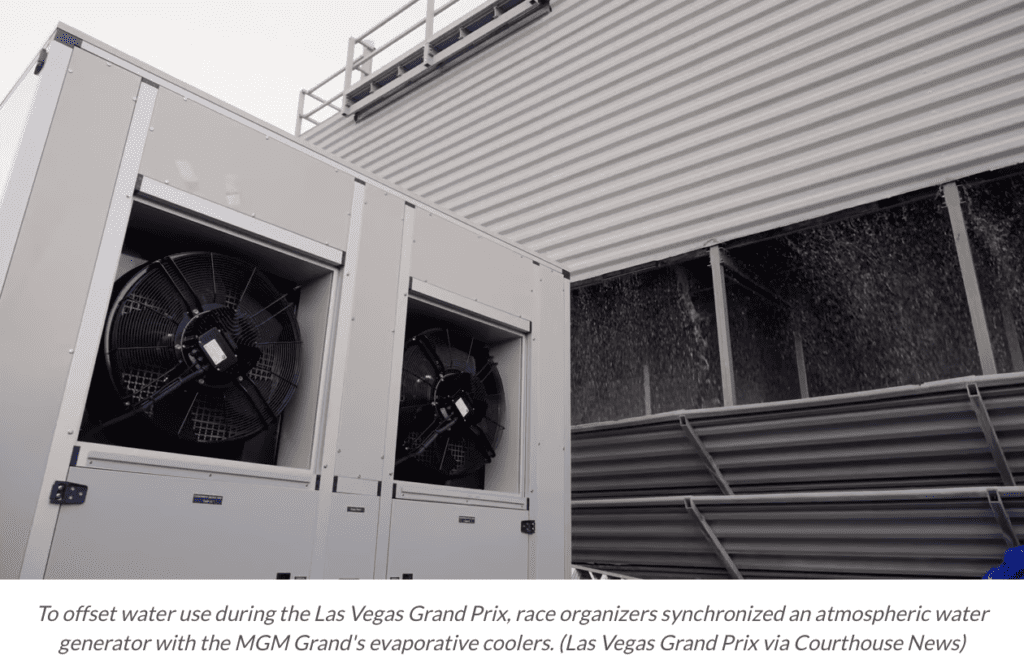
The installation took some troubleshooting: Since the AWG was designed to work in a humid environment, the team reconfigured it to work with the cooler on the roof of a desert hotel. In the end, though, Harris said they got the machines working in harmony. The AWG water-capture pilot collected its first glass of water two weeks before the start of the Formula 1 Heineken Silver Las Vegas Grand Prix in October, with many, many more glasses soon to come.
Harris said it’s too early to tell how impactful the program will be. Early estimates look good, with one AWG recycling an average 750 gallons of water per day off a single cooling tower.
Though Las Vegas has seen the proof of concept, there is a long road ahead. Going forward, Harris envisions fine-tuning and scaling the technology to catch and keep more water in one of the nation’s driest cities.
“The goal is to prove that this application of the technology — which we have never seen before — is viable, and then encourage adoption across the [Las Vegas] valley,” Harris said. It could become another tool in the toolbox for thirsty Western states — but as with any race, there will likely be many more pit stops and oil changes before they reach the finish line.Source: Courthouse News
3. Upper Agua Fria Watershed Partnership,10 am MST March 12, 2024
Please join my meeting from your computer, tablet or smartphone.
https://global.gotomeeting.com/join/555529925
You can also dial in using your phone.
United States: +1 (312) 757-3121
Access Code: 555-529-925
New to GoToMeeting? Get the app now and be ready when your first meeting starts: https://global.gotomeeting.com/install/555529925
Draft Agenda
1. Introductions and Announcements
2. Development updates: Candela Agua Fria Solar Farm.
Possible impacts from Prescott AMA Developments – Lakeshore 650 – Pat Betzhold;update
3. Black Canyon City Water Issues: ADOT <improvingi17.com>. Water Sources for Construction; updated Chandler Well Impact Analysis. Arizona Metals Black Canyon City Kay Mine: water levels, events, UAFWP meeting/tour at Kay Mine, details, Monday, April 8, 2024,10 am; lunch after for those interested
4. Theodore Roosevelt Conservation Partnership; www.trcp.org; Christian Fauser: Post Sackett WOTUS; funding for process-based restoration/natural infrastructure projects. University of Arizona’s Water Resources Research Center Annual Conference:”Implementing Water Solutions through Partnerships”. Sign up for free Zoom participation, March 12, 13, 2024
https://wrrc.arizona.edu/conference/2024
5. ADWR: Basin Study: any updates
6. FAFNM – updates
7. BCHP: updates, events
8. Organizational efforts for UAFWP; Website work with BCHP, Clean Water for All Grant Issues: Green Ribbon Project; Draft Job description for Intern: The UAFWP seeks to develop a map of all property owners from the headwaters of the Agua Fria River at Glassford Hill and Lynx Lake to Lake Pleasant including major tributaries such as Ash Creek, Bug Bug Creek, Sycamore Creek, and Black Creek, extending 1000 ft on each side or in the FEMA Floodplain, and a spread sheet including all available contact info by parcel. Arc-GIS, computer skills required. $25 per hour up to 300 hours to provide the deliverable by September 2024. Outreach for mentors, interns, GIS support. Continued discussion
9. Rural Water Management Issues: Legislative updates
Next Meeting: Monday, April 8, 2024 next meeting at Kay Mine in Black Canyon City
4. WaterReturns To 2021 Level, But Lake Mead’s Health Remains Fragile. Lake Mead’s water elevation climbed back to 2021 levels this month thanks to winter precipitation and resulting
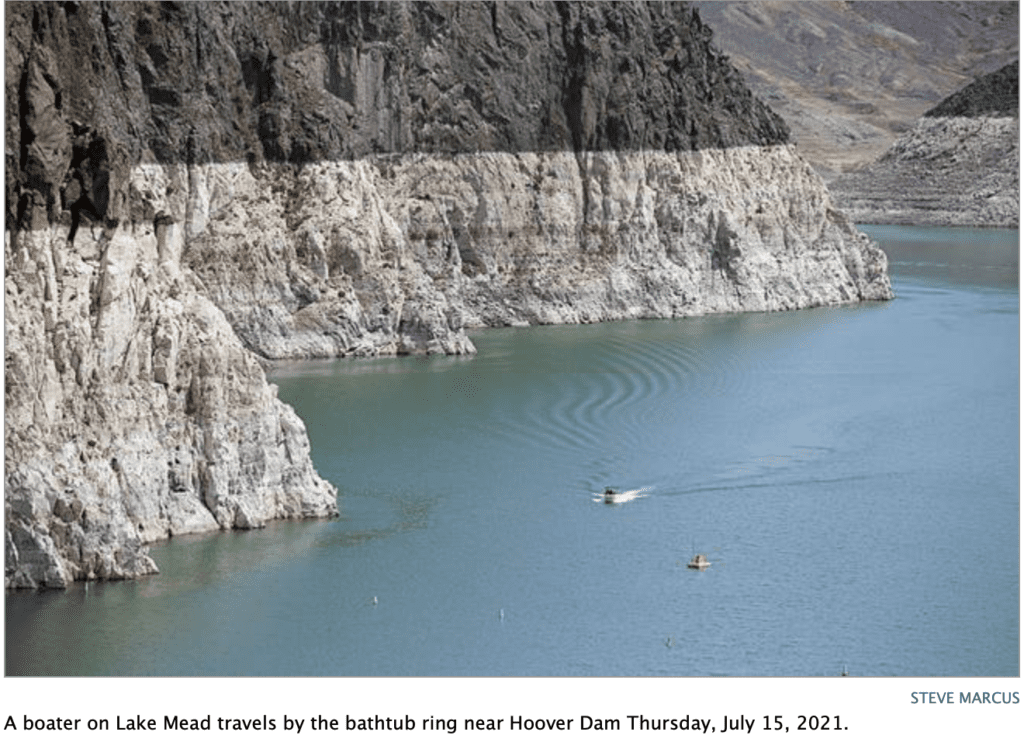
snow melt, but experts stress the challenges of managing the region’s water supply remain because of the hotter, drier climate that’s been persistent in the ongoing drought in the Western United States.
The lake’s surface reached 1,075 feet above sea level last week, according to the website lakelevels.info, to return to levels not seen since May 2021, when they measured at 1,073 feet.
Water cuts and the unusually heavy snowfall last winter helped the lake rally, said Bronson Mack, a spokesman for Southern Nevada Water Authority. But, he stresses, the higher water levels aren’t projected to last.
“We could see about a 20-foot swing in elevations this summer,” he said.
Some 40 million people from Denver to Mexico, including many farmers, depend on the 1,450-mile-long Colorado River for water. The river feeds into Lake Mead, where the retreating water levels are obvious with a bathtub ring showing where the water previously reached.
The race against climate change doesn’t give much time to refill reservoirs at Lake Mead and Lake Powell, experts say. Lake Mead reached its lowest level at 1,040 feet above sea level in July 2022.
Kim Mitchell, senior water policy adviser at Western Resource Advocates, warned last summer at the peak of the triple-digit temperature days in cities like Las Vegas and Phoenix that “it only takes a few dry years to set us back.” Source: Las Vegas Sun Feb 27, 2024]
]
5. February 29, 2024 – Leap Year. A leap year (also known as an intercalary year or bissextile year) is a calendar year that contains an additional day (or, in the case of a lunisolar calendar, a month) compared to a common year. The 366th day (or 13th month) is added to keep the calendar year synchronized with the astronomical year or seasonal year.[1] Because astronomical events and seasons do not repeat in a whole number of days, calendars that have a constant number of days in each year will unavoidably drift over time with respect to the event that the year is supposed to track, such as seasons. By inserting (“intercalating“) an additional day, a leap day, or month, a leap month, into some years, the drift between a civilization’s dating system and the physical properties of the Solar System can be corrected.
An astronomical year lasts slightly less than 365-1/4days. The historic Julian calendar has three common years of 365 days followed by a leap year of 366 days, by extending February to 29 days rather than the common 28. The Gregorian calendar, the world’s most widely used civil calendar, makes a further adjustment for the small error in the Julian algorithm. Each leap year has 366 days instead of 365. This extra leap day occurs in each year that is a multiple of 4 (except for years evenly divisible by 100, but not by 400).
The term leap year probably comes from the fact that a fixed date in the

Gregorian calendar normally advances one day of the week from one year to the next, but the day of the week in the 12 months following the leap day (from 1 March through 28 February of the following year) will advance two days due to the extra day, thus leaping over one day in the week.[2][3] For example, Christmas Day (25 December) fell on a Friday in 2020, Saturday in 2021, Sunday in 2022, and Monday in 2023, but then will “leap” over Tuesday to fall on a Wednesday in 2024
.
The length of a day is also occasionally corrected by inserting a leap second into Coordinated Universal Time (UTC) because of variations in Earth’s rotation period. Unlike leap days, leap seconds are not introduced on a regular schedule because variations in the length of the day are not entirely predictable.
Leap years can present a problem in computing, known as the leap year bug, when a year is not correctly identified as a leap year or when 29 February is not handled correctly in logic that accepts or manipulates dates. For more information, go to https://en.wikipedia.org/wiki/Leap_year
Copyright: 2024 EnviroInsight.org
